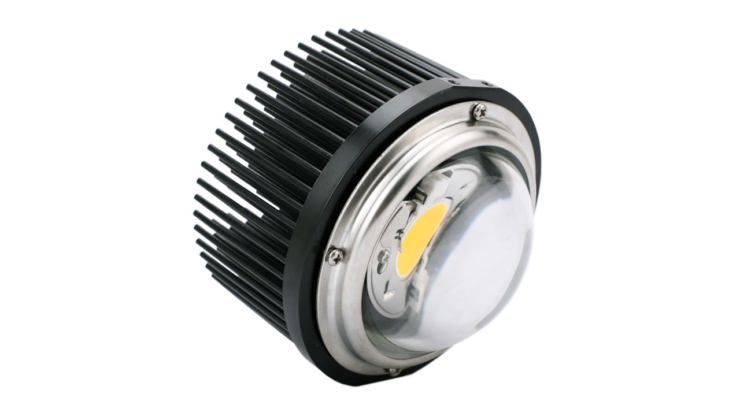
LED lighting devices experience significant amount of energy loss during AC-DC power transformation, electro-optic transformation (electroluminescence), and wavelength transformation. Incandescent, fluorescent, and metal halide lamps transform the waste energy into infrared radiation, ultraviolet radiation, and several combinations of heat. Unlike the conventional technologies, in LEDs, all energy losses that occur during the light emission process are expelled as heat. This presents a major engineering challenge where more than half of the power input is converted to heat on the LED circuit board.
The amount of light emitted by LEDs will decrease when junction temperature increase (the temperature where the diode connects to the base). Increasing the junction temperature of the LEDs leads to a decrease in voltage. Decrease in voltage also causes decrease in electrical power. When both effects combined significant decrease in light output can be observed.
The decrease in light output cause colorimetric shift. Every 10°C increase in junction temperature cause one nanometer increase in dominant wavelength of LED. As a result, there will be an observable colorimetric shift through the upper end of spectrum when the LEDS operated in high temperature. When the phosphor layer, which makes the LEDs emit white light, is operated above the saturation flux level, colorimetric shift occurs.
Operating the LEDs at high temperature for a short time will decrease the efficiency and downgrade the spectral quality of LEDs. Operating LEDs above the maximum allowable temperature continuously will cause irreversible damage to the LEDs.
Life span of a LED is inversely proportional to junction temperature. Every 10°C increase in junction temperature causes a 30 to 50 percent decrease in brightness. This permanent reduction in LEDs due to high temperature is known as lumen depreciation. On the other hand, high temperature will accelerate the degradation process of the polymer-based phosphorus layer. Phosphorus degradation and polymer carbonization cause an intolerable colorimetric shift in LED lighting.
Ambient temperature has an important effect on junction temperature. The colder the ambient, the higher the light output of the LEDs. As the ambient temperature increases, the junction temperature of the LEDs increases and the light output decreases.
Keeping the temperature of the LEDs under control is very important for the optimum performance of LED-based lighting systems. Lighting manufacturers use suitable heat sinks to control the temperature of the LEDs.







COMMENTS
MAKE A COMMENT